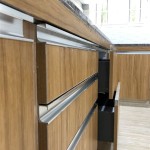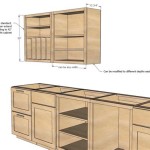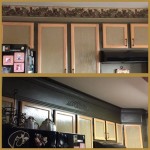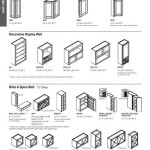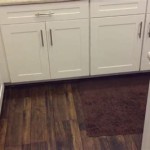Leaded Glass for Kitchen Cabinets: A Comprehensive Guide
Leaded glass, characterized by its intricate designs created by soldering pieces of glass together with lead cames, offers a distinctive aesthetic for kitchen cabinets. It provides a sophisticated alternative to plain glass or solid cabinet doors, introducing texture, color, and a sense of craftsmanship to the kitchen environment. The use of leaded glass in kitchen cabinets is not only visually appealing but also contributes to the overall character and style of the home. This article explores various aspects of using leaded glass in kitchen cabinets, including the design possibilities, the different glass types involved, installation considerations, maintenance requirements, and the potential impact on kitchen functionality and aesthetics.
The application of leaded glass in kitchen cabinets ranges from subtle accents to prominent design features. Smaller panels of leaded glass can be incorporated into upper cabinets, providing glimpses of stored items while obscuring them enough to maintain a sense of order. Larger leaded glass panels can become focal points, especially when backlit, highlighting the intricate designs and colors. The selection of the leaded glass design should be carefully considered to align with the overall style of the kitchen, whether it is traditional, modern, or somewhere in between. The color and texture of the glass, along with the pattern of the lead cames, influence the character of the cabinetry and the ambiance of the kitchen.
Design Possibilities and Style Considerations
The design possibilities for leaded glass in kitchen cabinets are virtually limitless. Traditional designs often incorporate geometric patterns, floral motifs, or heraldic symbols, creating a sense of timeless elegance. These designs may feature clear textured glass, colored glass, or a combination of both. The use of bevelled glass, where the edges are ground and polished at an angle, adds depth and dimension to the design, refracting light and creating a sparkling effect. Stained glass, with its vibrant colors and intricate details, can also be incorporated into leaded glass panels, allowing for the creation of unique and personalized designs. The choice of glass type and color greatly influences the overall aesthetic.
Modern leaded glass designs often feature simpler, more abstract patterns. Clean lines, geometric shapes, and minimalist color palettes are common characteristics. These designs can complement contemporary kitchen styles, adding a touch of sophistication without overwhelming the space. The use of frosted or etched glass can provide privacy while still allowing light to pass through. Sandblasted designs, created by blasting abrasive particles onto the glass surface, can create subtle patterns and textures. The placement of lead cames also plays a crucial role in the overall design. Straight lines and symmetrical patterns create a more formal look, while curved lines and asymmetrical patterns add a more organic feel.
The choice of leaded glass design should also consider the existing architectural features of the kitchen. If the kitchen has traditional features, such as crown molding and raised-panel cabinets, a more ornate leaded glass design may be appropriate. If the kitchen has a more modern aesthetic, a simpler, more streamlined design may be a better fit. It is also important to consider the color scheme of the kitchen. The colors in the leaded glass should complement the colors of the cabinets, countertops, and backsplash. The use of contrasting colors can create a dramatic effect, while the use of similar colors can create a more harmonious look.
Beyond aesthetics, design considerations may involve the level of privacy desired. Textured or patterned glass obscures the contents of the cabinet, offering a degree of concealment. Clear glass, on the other hand, offers full visibility. The decision often depends on the type of items stored within the cabinets and the desired level of openness in the kitchen design.
Types of Glass and Construction Techniques
Several types of glass can be used in the creation of leaded glass panels for kitchen cabinets. Clear glass is the most common type, providing unobstructed views of the cabinet contents. Textured glass, such as rippled, hammered, or frosted glass, adds visual interest and obscures the view. Colored glass adds a splash of color to the cabinetry and can be used to create intricate designs. Beveled glass, as mentioned earlier, adds depth and dimension. Each type of glass contributes differently to the overall aesthetic and functionality of the leaded glass panel.
The construction of leaded glass involves several steps. First, the design is drawn onto a pattern board. Then, individual pieces of glass are cut according to the pattern. The edges of the glass are then wrapped with lead cames, which are strips of lead with a channel that holds the glass in place. The lead cames are then soldered together at the joints, creating a rigid framework. Finally, the lead cames are patinated to give them a uniform color and sealed to protect them from corrosion. The craftsmanship involved in creating leaded glass is considerable, and the quality of the workmanship directly affects the appearance and durability of the finished product.
The thickness of the glass used in leaded glass panels is also an important consideration. Thicker glass is more durable and less likely to break. It also provides better insulation. However, thicker glass is also heavier and more expensive. The choice of glass thickness depends on the size of the panel and the level of traffic in the kitchen. For smaller panels in upper cabinets, thinner glass may be sufficient. For larger panels in lower cabinets, thicker glass is recommended.
The type of lead used in the cames also affects the appearance and durability of the leaded glass panel. Traditional lead cames are made of soft lead, which is easy to work with but also prone to corrosion. Newer lead cames are made of stronger alloys, which are more resistant to corrosion. The choice of lead type depends on the desired aesthetic and the expected lifespan of the leaded glass panel.
In addition to traditional lead cames, other materials can be used to join the glass pieces. Copper foil, for example, can be used to create a more delicate and intricate design. Resin can also be used to bond the glass pieces together, creating a seamless and waterproof seal. These alternative techniques are often used in modern leaded glass designs.
Installation and Maintenance Considerations
The installation of leaded glass panels in kitchen cabinets requires careful attention to detail. The panels must be properly sized to fit the cabinet frames. The frames must be structurally sound to support the weight of the glass. The panels must be securely fastened to the frames to prevent them from falling out. It is recommended to hire a professional installer to ensure that the leaded glass panels are installed correctly.
The weight of leaded glass is a significant factor to consider during installation. The additional weight can strain cabinet hinges and frames. Reinforcement may be necessary to ensure the structural integrity of the cabinets. Securely fastening the leaded glass panels to the cabinet frames is critical for safety and longevity.
Regular maintenance is essential to keep leaded glass panels looking their best. The glass should be cleaned regularly with a mild soap and water solution. Harsh chemicals and abrasive cleaners should be avoided, as they can damage the glass and the lead cames. The lead cames should be inspected periodically for signs of corrosion or damage. If corrosion is present, the lead cames should be cleaned with a specialized lead cleaner.
Over time, the lead cames may oxidize and darken. This is a natural process that does not affect the structural integrity of the leaded glass panel. However, if the oxidation is unsightly, the lead cames can be cleaned with a lead cleaner and polished with a soft cloth. The use of protective waxes or coatings can help prevent future oxidation.
Damage to leaded glass, such as cracked or broken glass pieces, requires professional repair. A qualified glass artisan can carefully remove the damaged piece, replace it with a matching piece of glass, and re-solder the lead cames. Attempting to repair leaded glass without the proper tools and expertise can result in further damage.
The environment within the kitchen can also affect the longevity of leaded glass. High humidity and temperature fluctuations can accelerate corrosion and damage. Proper ventilation and climate control can help prolong the life of leaded glass panels.

Leaded Glass Kitchen Cabinets Design Ideas

Leaded Glass Cabinets Traditional Kitchen

A Touch Of Glass

Page Not Found Glass Kitchen Cabinets Leaded Cabinet Doors

How To Make Your Kitchen Beautiful With Glass Cabinet Doors Heather Hungeling Design

Cabinet Glass Masterpiece Leaded Windows

Genuine Handcrafted Leaded Glass Cabinet Door Sgk 2143

Winter Projects The Kitchen Renovation Glassart Design

Leaded Glass Inserts And Doors Designed For Kitchens Traditional Kitchen Toronto By Glassworks Studio Custom Houzz

Lead Stain Glass Cabinet Door Inserts 1

